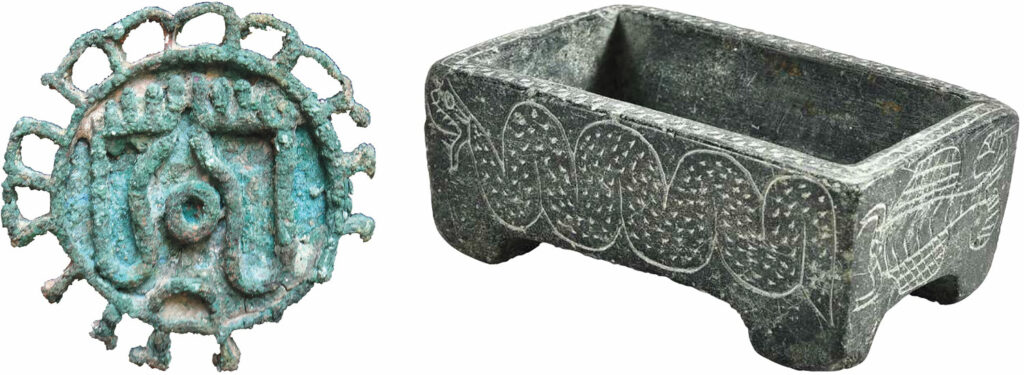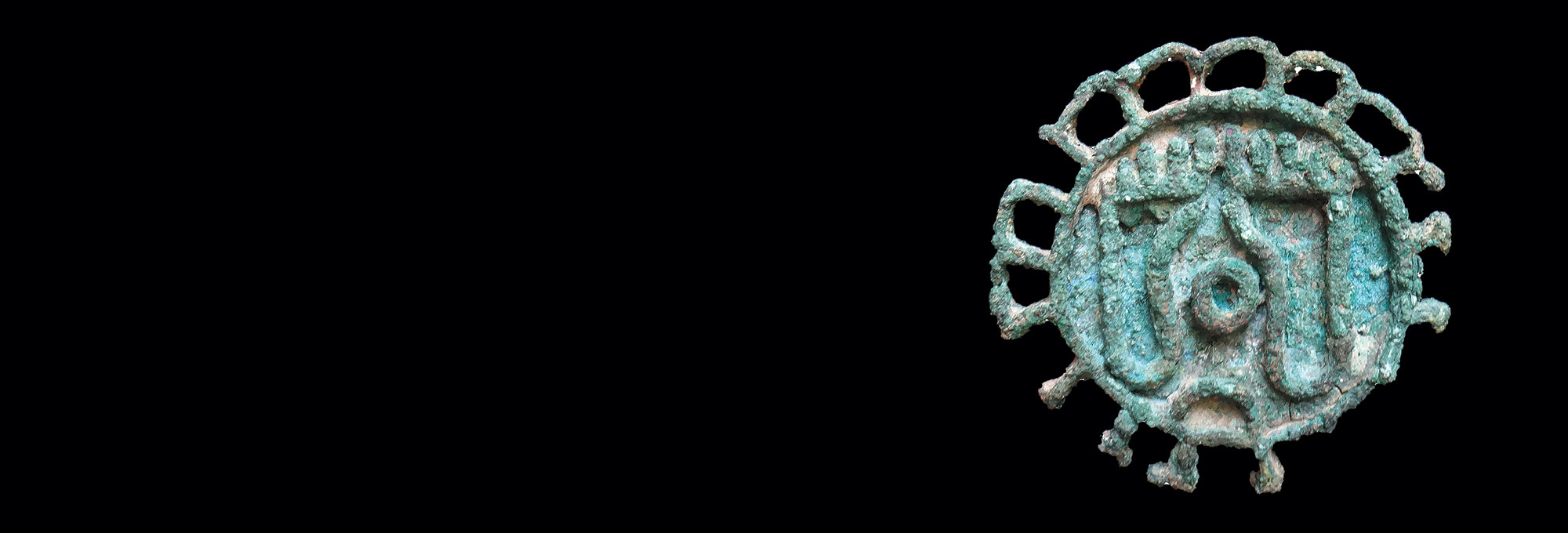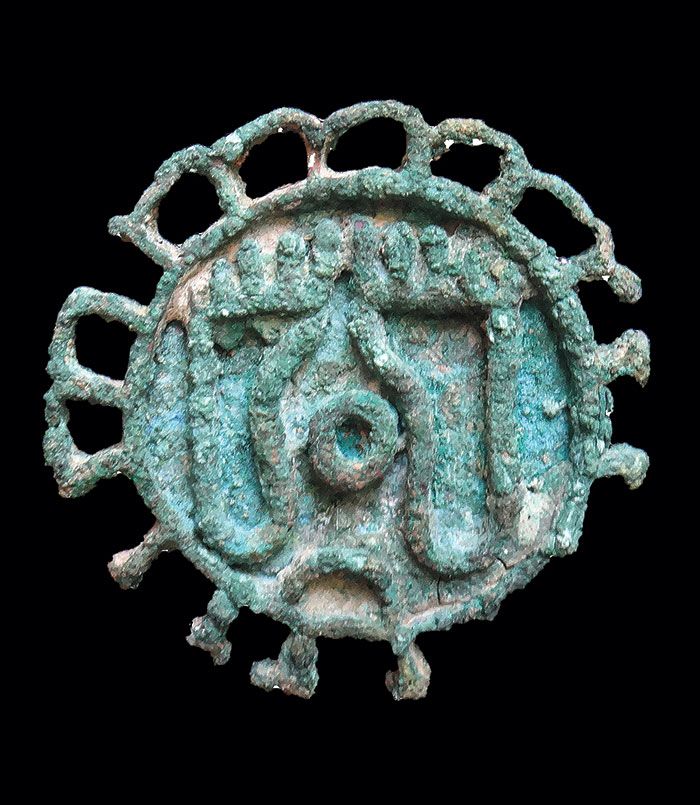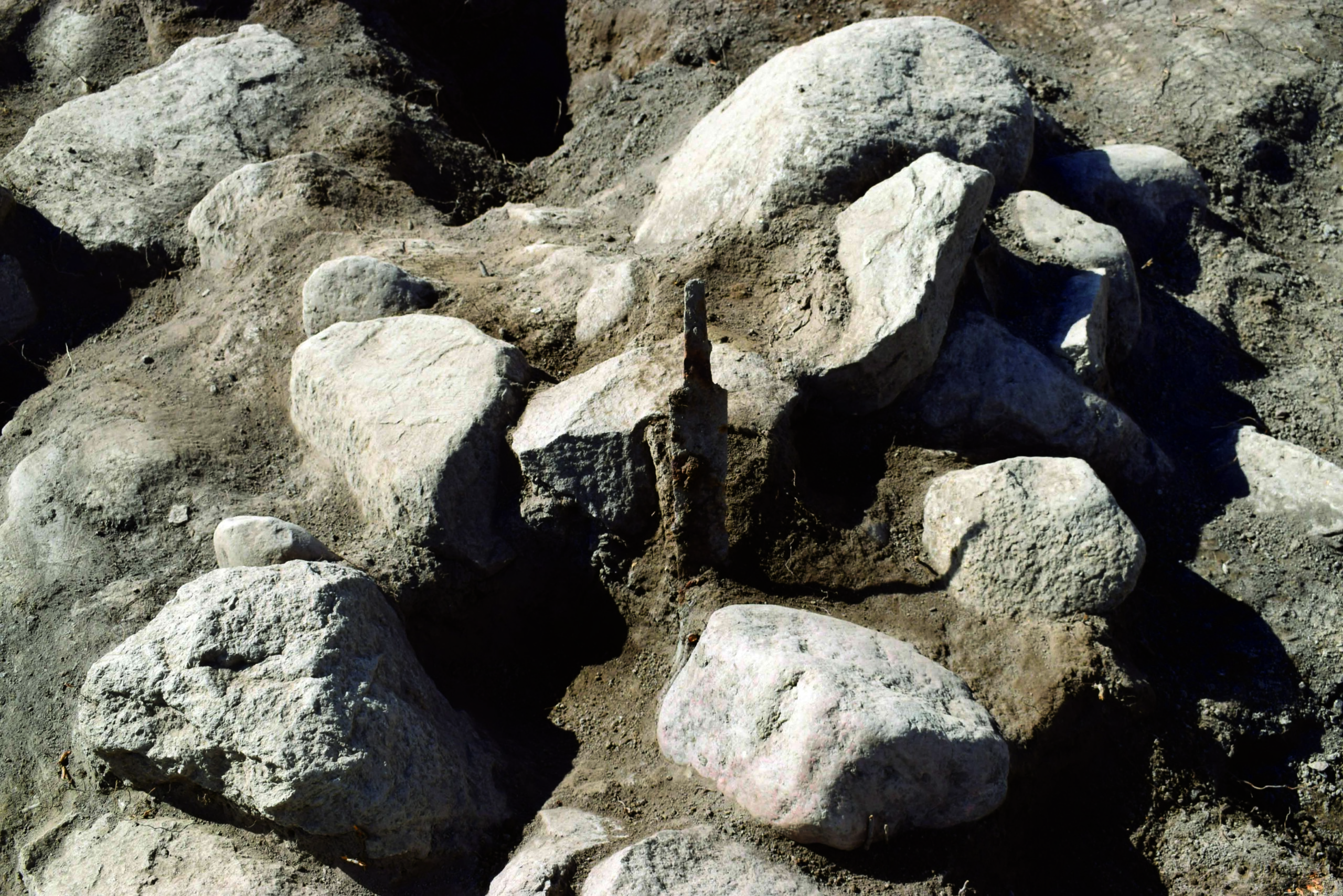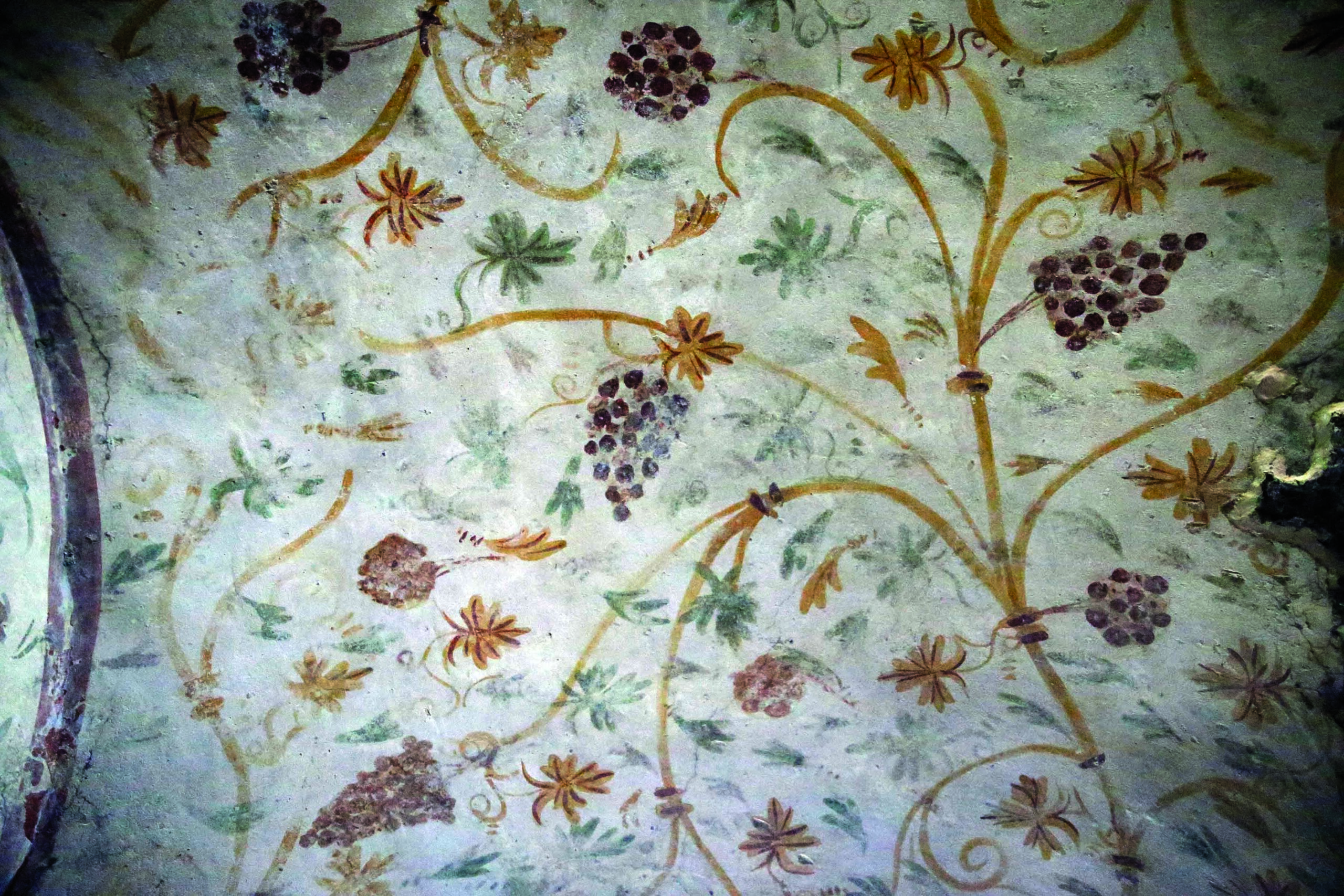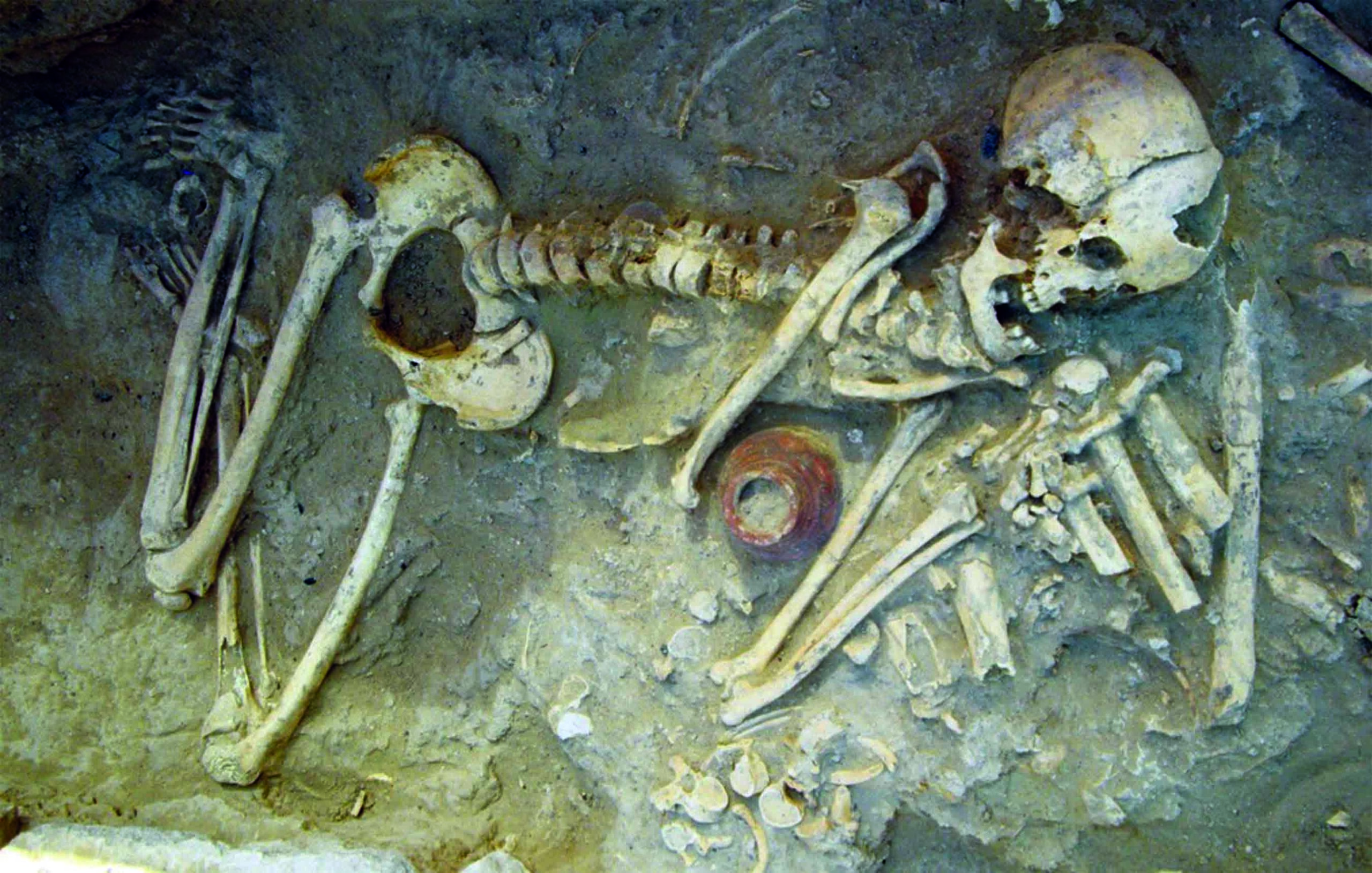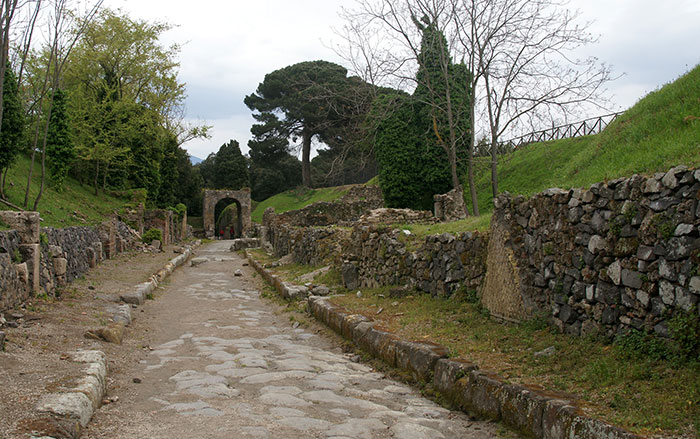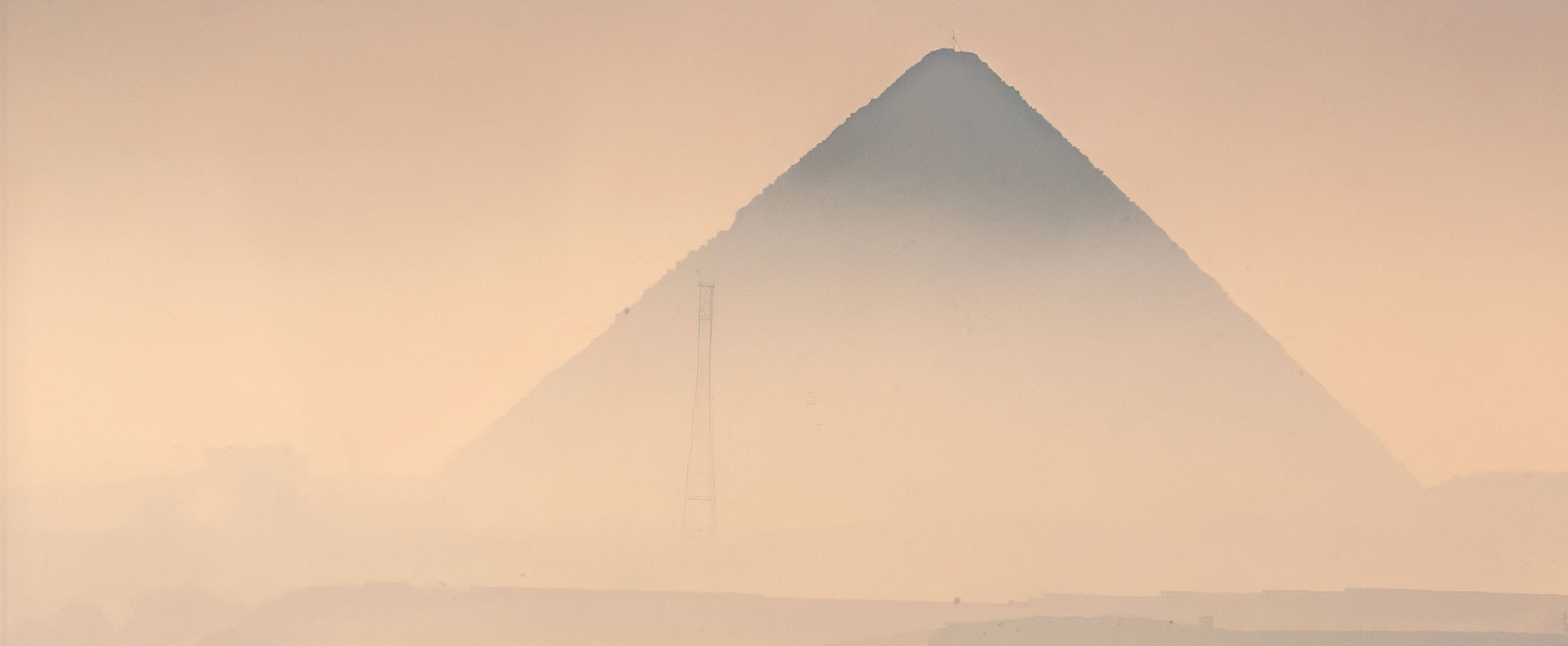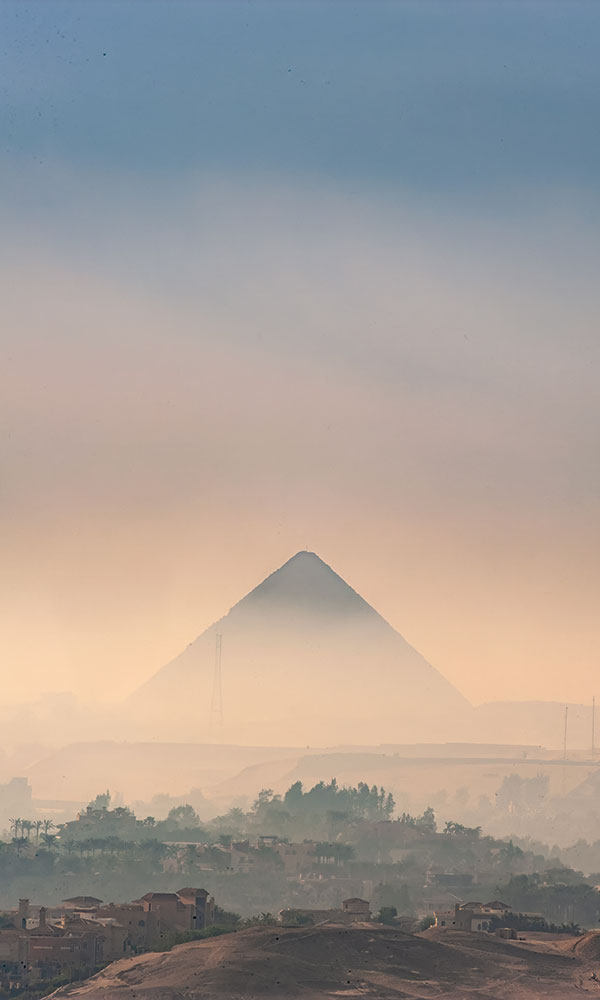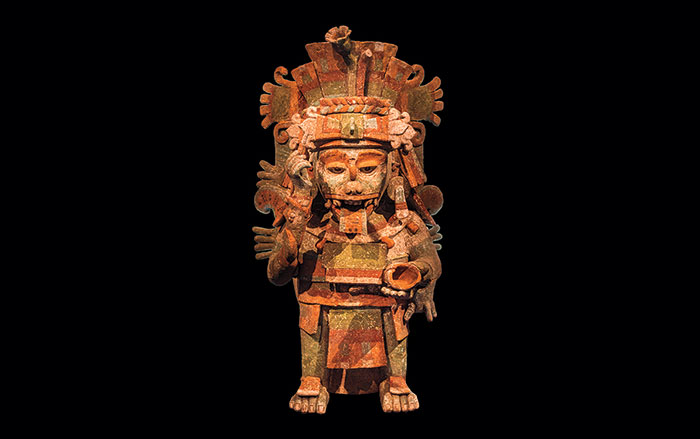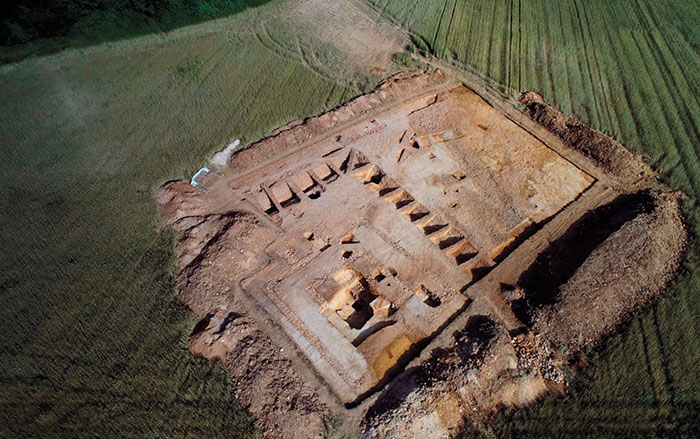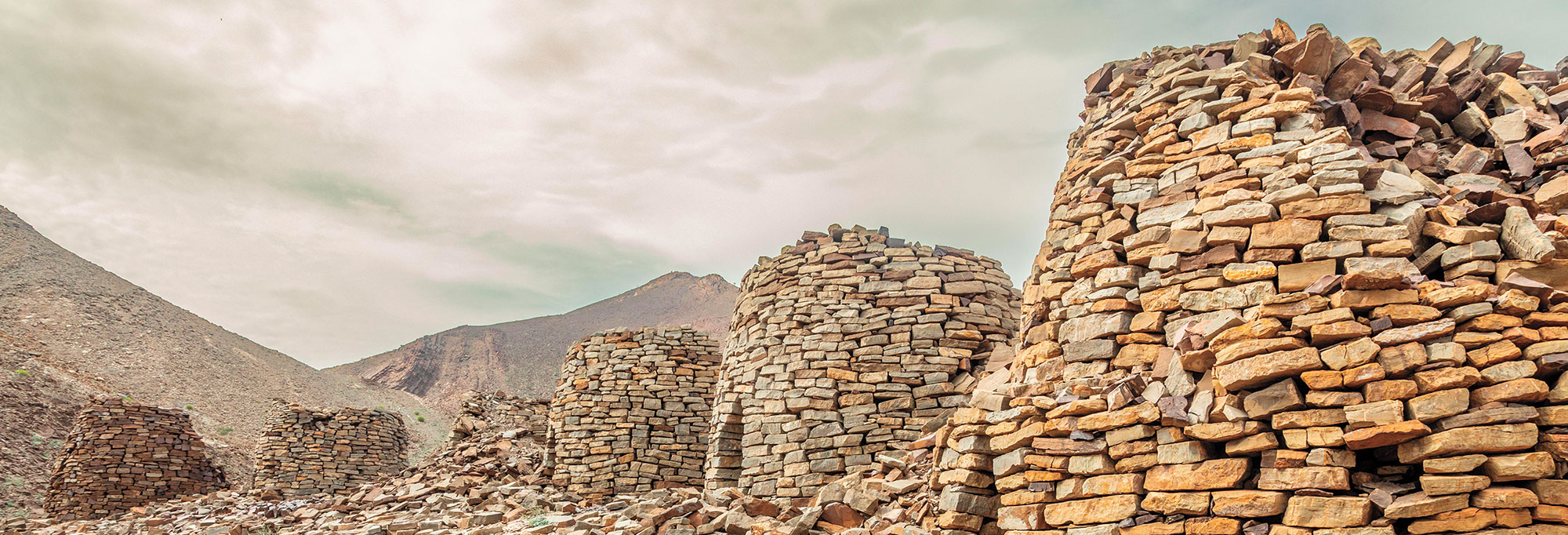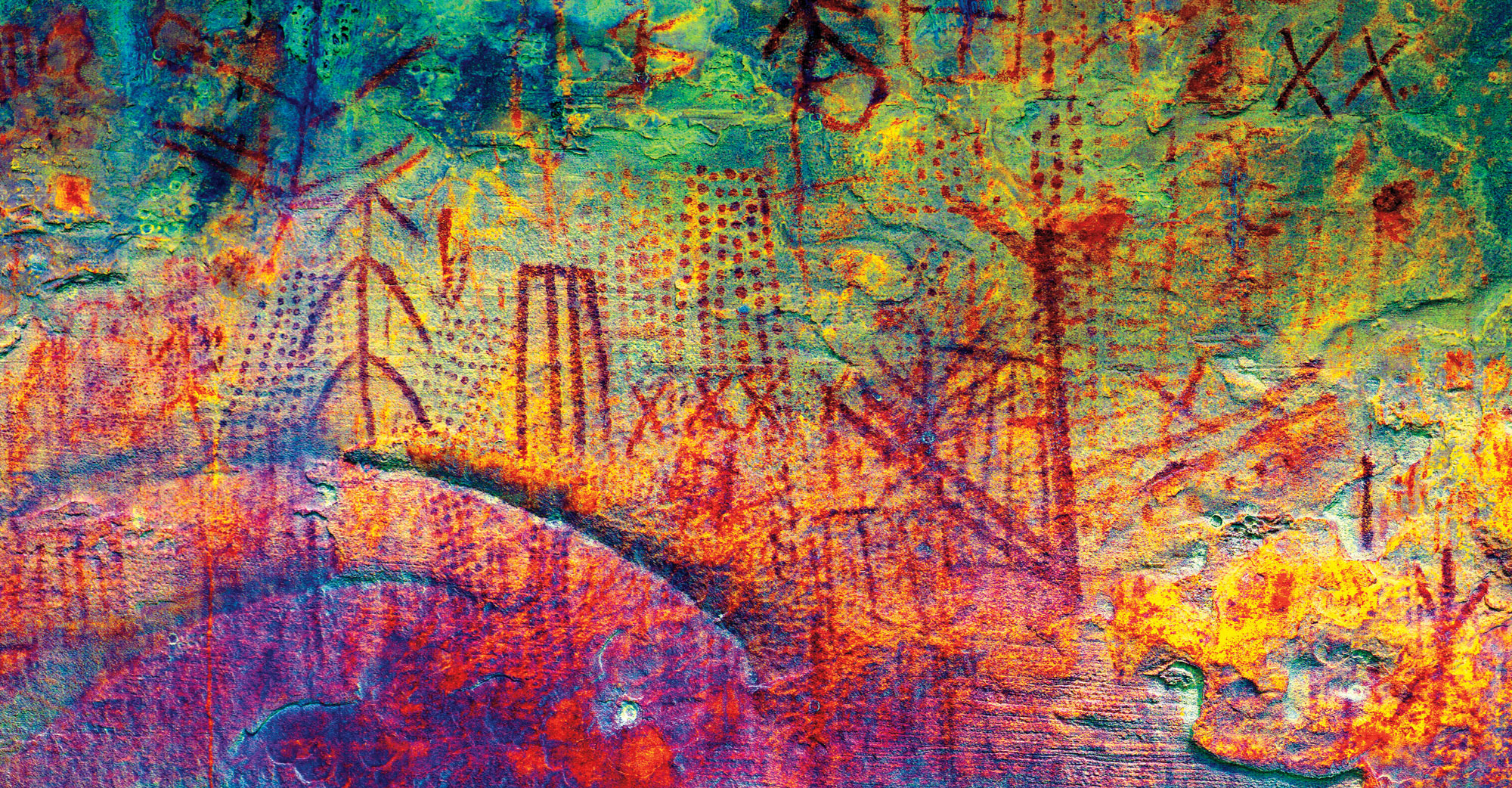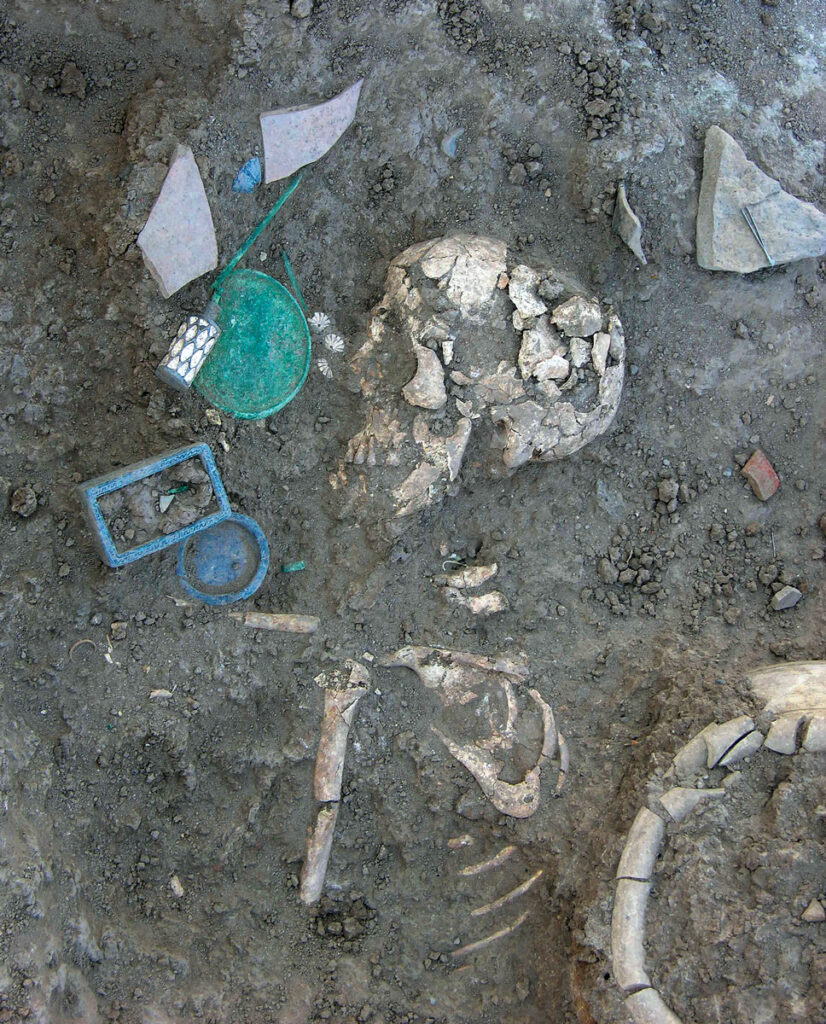
Until the 1970s, the Bronze Age culture of the Oxus, or Greater Khorasan Civilization (GKC), of Central Asia was virtually unknown to scholars. Excavations have since shown that this culture flourished from about 2300 to 1700 b.c. and was composed of urban settlements concentrated primarily in southern Uzbekistan and neighboring regions. A team led by archaeologist Ali Vahdati of the General Directorate of Cultural Heritage of Iran’s North Khorasan Province recently excavated the westernmost known GKC settlement, a site of about 100 acres in the desert of northern Iran known as Tepe Chalow. Despite its remote location, the settlement was a rich trade hub that was home to specialized metalworkers and stone carvers, along with herders and farmers.
At Tepe Chalow’s necropolis, the team unearthed 38 burials, the most lavish of which belonged to a woman who was no older than 18 when she died. Among the 34 objects buried with her was a cosmetics container fashioned from greenstone and decorated with snakes and scorpions. These motifs were likely associated with beliefs about the afterlife. A two-inch-wide copper seal engraved with depictions of two footprints was also buried with the woman. Scholars believe such seals were symbols of authority used to validate contracts. Vahdati notes that in the core areas of the GKC, seals are often found in the graves of women who may have wielded significant political influence. “Women in the world of the GKC were not necessarily subject to rigid patriarchal constraints,” he says.
